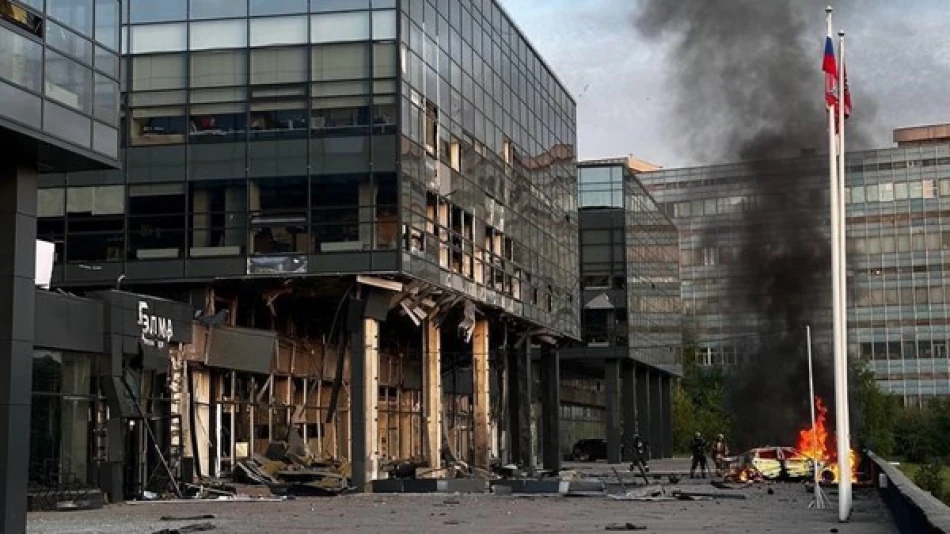
Disruptions at Moscow Airports Amid Airspace Attacks
Moscow Under Fire: Massive Drone Strike Disrupts Russian Capital's Aviation Hub
Russia's capital faced one of its most significant aerial attacks since the Ukraine conflict began, with 138 drones intercepted over Russian territory—including 23 directly over Moscow—forcing the closure of all four major airports and damaging high-rise buildings. The strike represents a dramatic escalation in Ukraine's ability to project force deep into Russian territory, potentially reshaping both military strategy and public perception of the war.
Scale of the Attack Overwhelms Defenses
Russian Defense Ministry officials reported intercepting 138 drones in what appears to be one of the largest coordinated aerial assaults on Russian soil since World War II. The sheer volume of incoming targets—23 over Moscow alone—suggests a sophisticated operation designed to saturate air defenses and ensure some projectiles reached their intended targets.
Moscow Mayor Sergei Sobyanin acknowledged the damage but downplayed its severity, stating repairs would be completed quickly. However, social media footage from residents in the Selenograd district painted a more dramatic picture: shattered windows across multiple high-rise buildings, burning vehicles, and debris scattered throughout residential areas.
Aviation Chaos Ripples Through Europe's Busiest Airspace
Russia's aviation authority (Rosaviatsia) imposed immediate flight restrictions across Moscow's four primary airports—Sheremetyevo, Vnukovo, Domodedovo, and Zhukovsky—creating a ripple effect throughout Eastern European air traffic. These facilities handle over 50 million passengers annually and serve as critical transit hubs for flights between Europe and Asia.
The aviation disruption mirrors similar patterns seen during major security incidents at other global hubs, but the sustained nature of the threat suggests this could become a recurring challenge for Russian civil aviation infrastructure.
Strategic Implications for the Conflict
This attack marks a significant evolution in Ukraine's military capabilities, demonstrating an ability to coordinate large-scale operations hundreds of kilometers from the front lines. The targeting of Moscow—both symbolically and practically—represents a shift from defensive operations to strategic strikes aimed at disrupting Russian logistics and morale.
Unlike previous isolated incidents, the scale and coordination of this assault suggests Ukraine has developed or acquired drone technology capable of overwhelming Russian air defense systems, even around the heavily protected capital region.
Economic and Psychological Impact
Beyond immediate physical damage, the attack delivers a powerful psychological message to Russian civilians who have largely been insulated from direct conflict. The sight of burning buildings and grounded aircraft in Moscow contradicts official narratives about the war's progress and Russia's defensive capabilities.
For international observers, the incident raises questions about the security of Russian airspace and the potential for further escalation. Energy markets and regional stability calculations may need adjustment as the conflict demonstrates new dimensions of reach and impact.
Historical Context and Future Implications
Moscow hasn't experienced aerial attacks of this magnitude since Nazi Germany's bombing campaigns during World War II. The successful penetration of Russian airspace, despite sophisticated defense systems, suggests either gaps in coverage or the evolution of drone technology beyond current countermeasures.
This development could accelerate Russian investment in air defense systems while potentially influencing public opinion about the conflict's trajectory. The ability to disrupt civilian aviation and damage residential areas demonstrates that modern warfare's boundaries continue to expand, with implications extending far beyond traditional military targets.
Most Viewed News

 Layla Al Mansoori
Layla Al Mansoori






